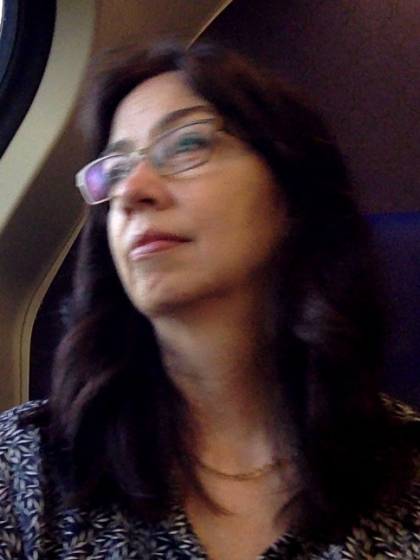C.G. (Christina) Williamson, Dr

Speerpunten
1 Deep-mapping festival hubs
Much like music festivals today, religious festivals in antiquity were hugely popular and drew tremendous crowds from across the ancient world. Especially after Alexander the Great, they became central nodes in a network that connected cities across the Mediterranean, and well beyond. Besides religious ceremonies, these festivals were lively spectacles that included song and dance as well as sporting events and music or theatrical competitions, with prizes. Cities especially in the eastern Mediterranean increasingly organized these ‘transnational’ events which were social and economic magnets and channels of political diplomacy all at the same time. But who was behind them? What did they mean to the different people who visited them? Was everyone equally involved? Or thrilled? How did people respond to them? What kinds of narratives did they inspire?
The Deep Mapping Sanctuaries project seeks to answer these questions through concepts of place-making, spatial narratives, and deep mapping. Drawn from the social sciences and urban planning, ‘place-making‘ is used to describe how people take ownership of a certain place, investing their identities through stories, rituals or other actions, monuments, and through what they leave behind. This concept is ideal for understanding the multi-vocality of a place.
In the ancient world, most of our surviving evidence of place-making stems from ‘official’ sources, like temples, theaters, and statues, commissioned by polities and individuals that could afford them. But looking carefully, we can sometimes get a glimpse of the crowds that once gathered there, telling stories, scratching their names on the walls or under the statues, leaving private dedications (votives) to the gods, and sometimes just by the wear and tear of their footprints.
This project attempts to combine these different kinds and levels of data into a composite ‘spatial narrative‘ of what these festival sites meant to different people at different times, seeking to understand the notion of place at the crossroads of collective ideologies and personal lives. Using the concept of ‘deep mapping‘, it attempts to assimilate the multiple layers of meaning accumulating across time in order to assess the long-term biography of a place in its relationships with people at the local, regional and ‘transnational’ levels.
This project is part of the larger project Connecting the Greeks. Multi-scalar festival networks in the Graeco-Roman world, funded through the Netherlands Organization for Scientific Research (NWO), and OIKOS Anchoring innovation, which I co-direct through the University of Groningen in the Netherlands.
See http://deepmappingsanctuaries.wordpress.com/
2 Connecting the Greeks. Multi-scalar festival networks in the Graeco-Roman world
Festivals as at Olympia are widely considered crucial to the consolidation of the archaic Greek world. Yet the actual floruit of this festival culture occurred much later, in the wake of Alexander the Great (356-323 BCE) as cities old and new began organizing great festivals of their own, modelled on the traditional Panhellenic games, but with a new twist as they operated at multiple scales simultaneously: local, by consolidating the (new) citizenry of the polis; regional, by including surrounding cities in athletic competitions; and ‘global’, by forging links between cities across the expanded Greek world.
The overall aim of this project is to approach this spectacular rise of festival culture not as a mere by-product of the expanding Greek world, but as an active force that constantly forged ties, linking this world together. We see festivals and their games were key factors in the creation and maintenance of an imagined community of Greek cities within the Hellenistic world. They were central to the transformation of the small-scale, multi-polar world of the Greek city to a larger interconnected world dominated by vast territorial empires. In our hypothesis, these festivals formed networks of cooperation, critical to processes of ‘globalization’ observed in the Hellenistic era, paving the way for the Roman empire and the spread of Christianity.
This project includes my research 'Deep-Mapping Festival Hubs' and 3 PhD projects - A. Wiznura, on regional festival networks (NWO); T.M. Britton on global festival networks (NWO); and R. van Vliet on Roman anchoring in festival networks (NWO/OIKOS Anchoring Innovation); co-directed with O.M. van Nijf. See http://connectingthegreeks.com/
